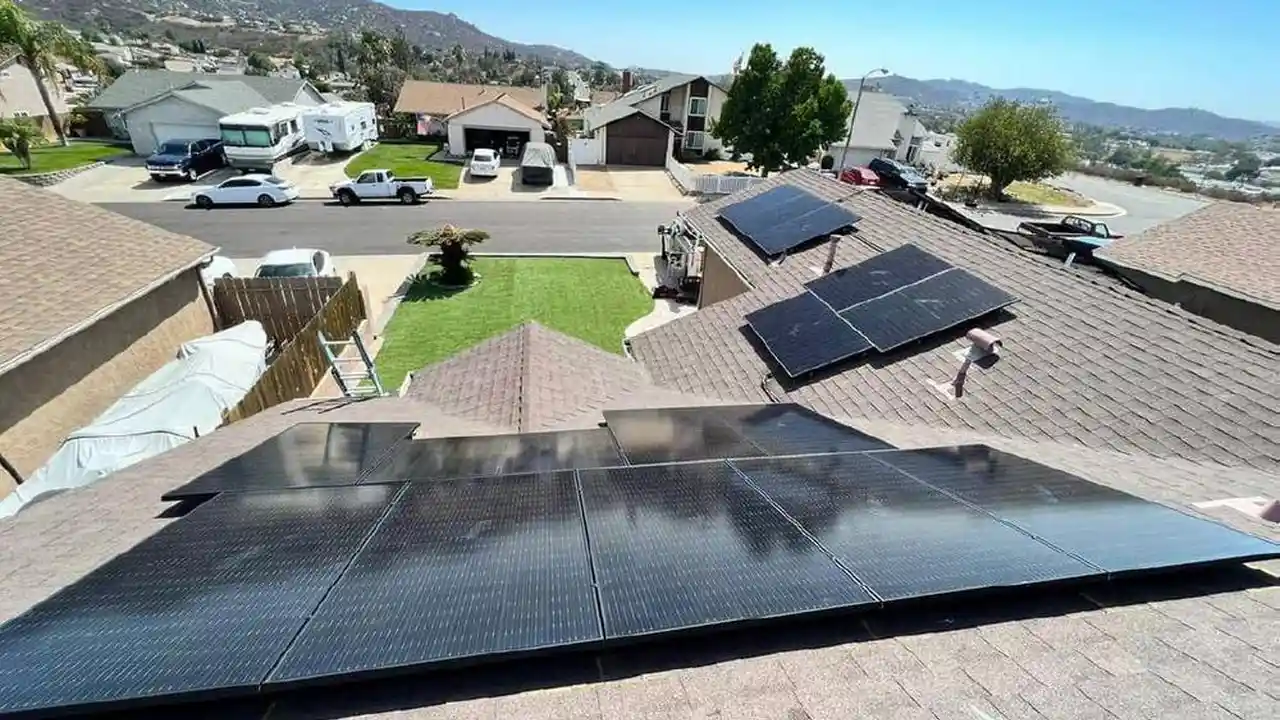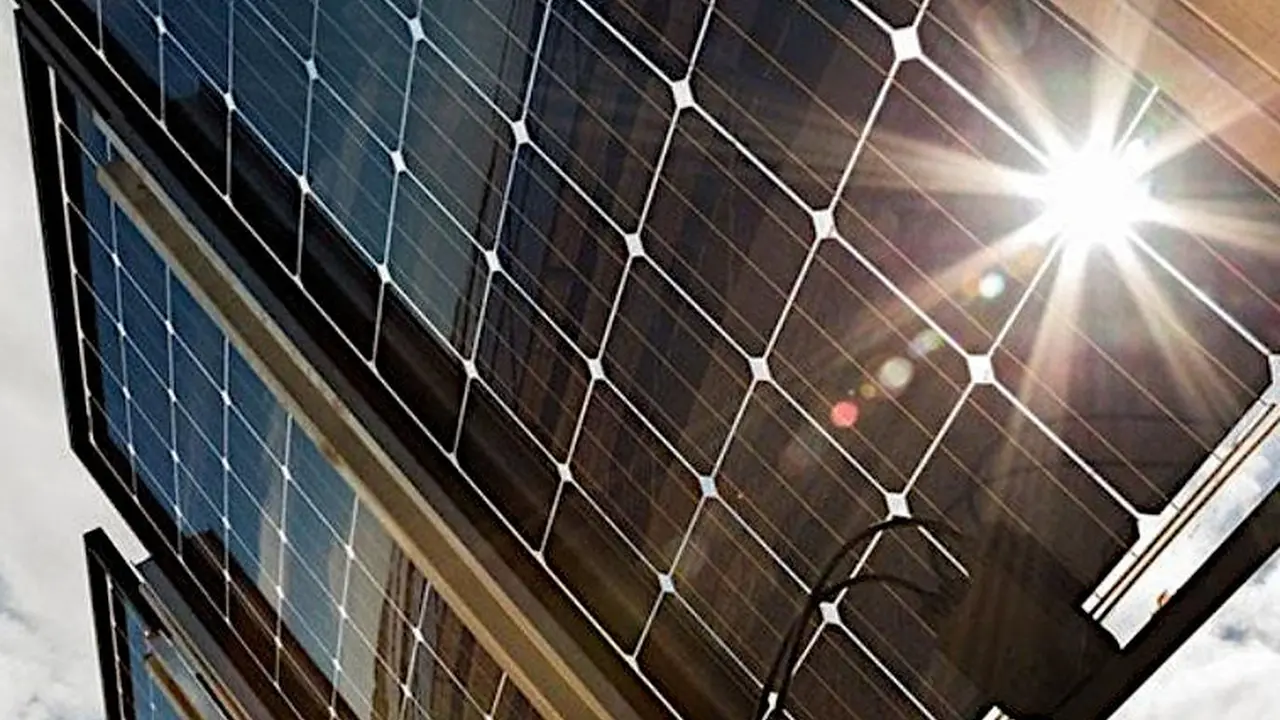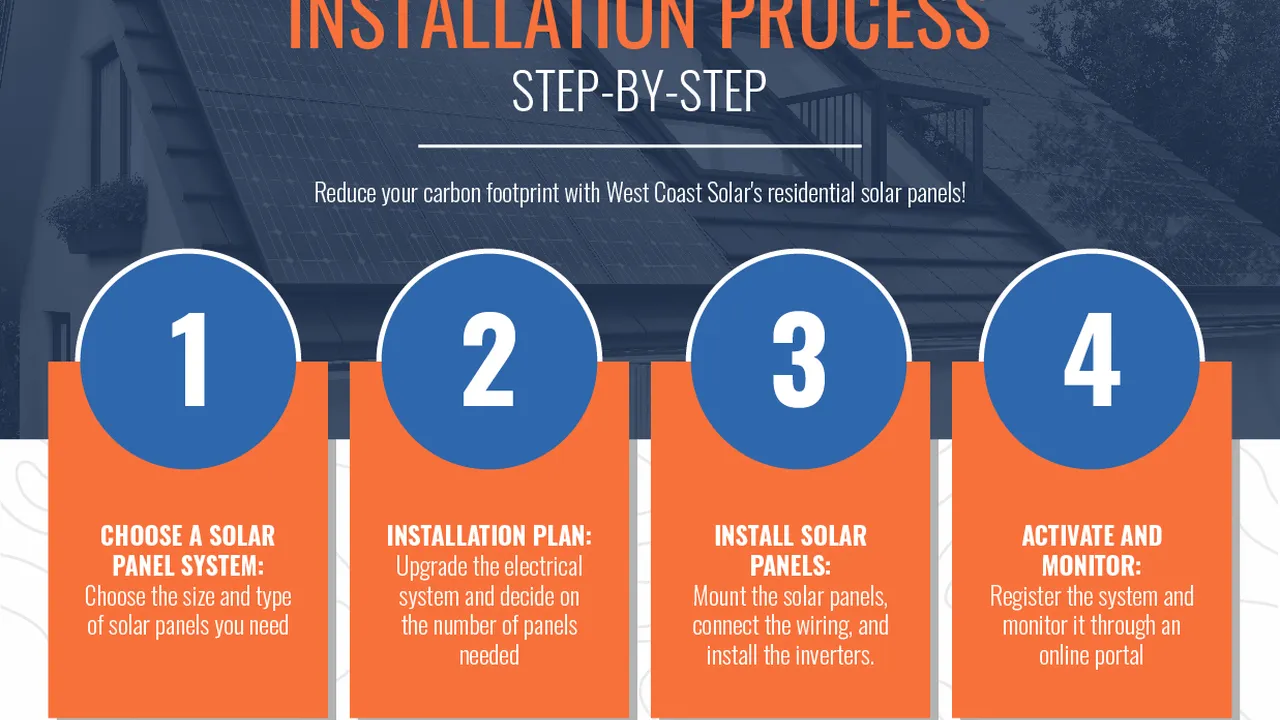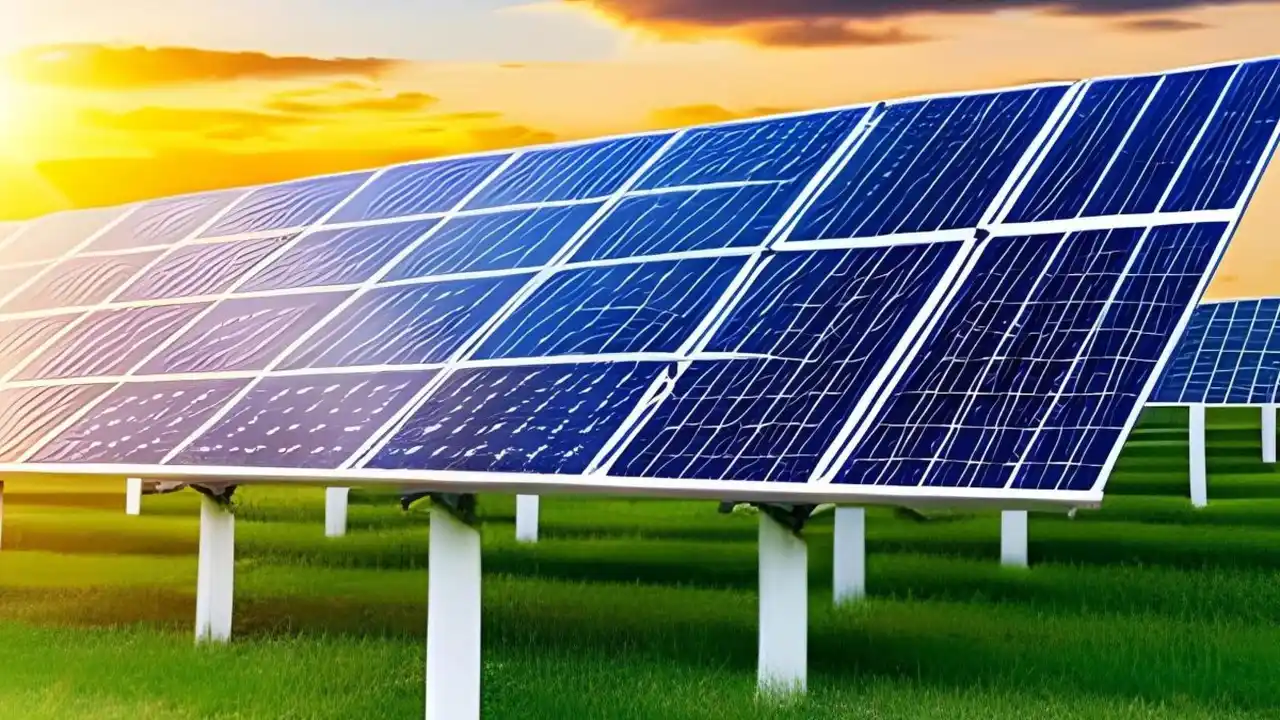Extending the Life of Your Solar Panels: Key Tips

Understanding Solar Panel Degradation Factors and Prevention
Hey there, solar enthusiasts! Let's dive into keeping your solar panels kicking for the long haul. Solar panels are a fantastic investment, but like any piece of technology exposed to the elements, they degrade over time. Understanding the factors that contribute to this degradation is crucial for extending their lifespan and maximizing your return on investment. We're talking about things like UV radiation, extreme temperature fluctuations, moisture, and even the good ol' dirt and grime. Let's break it down:
- UV Radiation: The sun's rays are powerful. Constant exposure to UV radiation can cause the materials in your solar panels to break down, leading to reduced efficiency.
- Temperature Fluctuations: The constant expansion and contraction caused by temperature changes can stress the panel components, leading to cracks and other damage.
- Moisture: Rain, snow, and humidity can seep into the panels, causing corrosion and electrical issues.
- Dirt and Grime: Dust, pollen, bird droppings – it all accumulates on your panels, blocking sunlight and reducing their output.
So, what can you do about it? Prevention is key! Regular inspections and cleaning are your best friends. Keep an eye out for any signs of damage, like cracks, discoloration, or loose wiring. And make sure to clean your panels regularly to remove any accumulated dirt and grime. We'll get into specific cleaning techniques later.
Regular Solar Panel Cleaning Methods and Best Practices for Optimal Performance
Alright, let's talk cleaning! Dirty panels are inefficient panels. Think of it like trying to read a book through a smudged window. You're not getting the full picture, are you? The same goes for your solar panels. Regular cleaning can significantly improve their performance. But before you grab your garden hose and scrub brush, let's go over some best practices.
- Frequency: How often should you clean your panels? It depends on your location and the amount of dirt and debris in the air. Generally, cleaning them every 6 months to a year is a good starting point. If you live in a dusty or polluted area, you might need to clean them more frequently.
- Tools: You don't need fancy equipment. A soft brush, a squeegee, and a hose are usually all you need. Avoid using abrasive cleaners or harsh chemicals, as they can damage the panel surface.
- Water: Use distilled water or deionized water if possible. Tap water can contain minerals that can leave spots on your panels.
- Technique: Start by rinsing the panels with water to remove loose dirt and debris. Then, use the soft brush to gently scrub the panels. Rinse them again with water and use the squeegee to remove any remaining water.
- Safety First: Always follow safety precautions when cleaning your panels. Turn off the system, use a ladder safely, and avoid cleaning the panels during the hottest part of the day. If you're not comfortable cleaning the panels yourself, hire a professional.
Remember, gentle is the name of the game! You're not trying to remove barnacles from a ship; you're just removing a thin layer of dust and grime.
Solar Panel Inspection Checklist Identifying Potential Problems Early
Beyond just cleaning, regular inspections are crucial for catching problems early. Think of it as a regular checkup for your solar panels. The sooner you identify a potential issue, the easier and cheaper it will be to fix.
Here's a checklist of things to look for:
- Cracks or Damage: Inspect the panels for any cracks, chips, or other damage. Even small cracks can affect performance.
- Discoloration: Check for any discoloration or yellowing of the panel surface. This can be a sign of UV degradation.
- Loose Wiring: Inspect the wiring and connections for any loose or corroded connections.
- Vegetation: Make sure there's no vegetation growing near the panels that could block sunlight.
- Bird Droppings: Bird droppings can significantly reduce panel output. Remove them as soon as possible.
- Module Performance: Use a multimeter to check the voltage and current of each panel. Compare the readings to the manufacturer's specifications. Significant deviations can indicate a problem.
- Inverter Functionality: Monitor your inverter for any error messages or unusual behavior.
- Mounting Structure: Inspect the mounting structure for any signs of rust, corrosion, or damage. Make sure the panels are securely mounted.
Keep a record of your inspections and any findings. This will help you track the performance of your panels over time and identify any potential problems early.
Troubleshooting Common Solar Panel Issues and Diy Repair Options
Okay, so you've identified a problem. Now what? Some issues you can tackle yourself, while others require a professional. Let's look at some common problems and potential DIY repair options.
- Loose Wiring: If you find loose wiring, you can usually tighten the connections yourself. Make sure to turn off the system before working on any electrical components.
- Minor Cracks: Small surface cracks may not significantly affect performance. You can try sealing them with a clear silicone sealant. However, if the cracks are large or deep, it's best to replace the panel.
- Vegetation Removal: Removing vegetation is a simple DIY task. Just make sure to use appropriate tools and avoid damaging the panels.
- Bird Dropping Removal: As mentioned before, remove bird droppings promptly.
When to Call a Professional:
- Major Cracks or Damage: If your panels have significant cracks or damage, it's best to call a professional.
- Electrical Issues: If you're not comfortable working with electrical components, leave it to the pros.
- Inverter Problems: Inverter problems can be complex and require specialized knowledge.
- Roof Repairs: If you need to access the panels on your roof, it's best to hire a professional for safety reasons.
Remember, safety is paramount. If you're not sure how to fix something, it's always best to err on the side of caution and call a professional.
Solar Panel Cleaning Products: Reviews and Recommendations for Different Climates
Choosing the right cleaning products can make a big difference in the effectiveness of your cleaning efforts. Here are a few recommendations, along with their pros and cons, and price ranges:
- Simple Green All-Purpose Cleaner: This is a popular and affordable option. It's biodegradable and safe for use on solar panels. Pros: Affordable, readily available, biodegradable. Cons: May require more scrubbing than specialized cleaners. Price: $10-15 per gallon. Best for: General cleaning in areas with light to moderate dirt and grime.
- Solar Panel Cleaning Kit by Unger: This kit includes a soft brush, a squeegee, and a telescoping pole. Pros: Convenient, includes all the necessary tools. Cons: Can be more expensive than buying individual components. Price: $50-100. Best for: Homeowners who want a complete cleaning solution.
- Deionized Water System: This system removes minerals from tap water, preventing spots and streaks on your panels. Pros: Leaves panels sparkling clean, prevents mineral buildup. Cons: More expensive than using tap water. Price: $100-500. Best for: Areas with hard water or homeowners who want the best possible cleaning results.
- Windshield Washer Fluid (Diluted): A surprisingly effective and affordable option. Be sure to dilute it significantly (e.g., 1 part fluid to 10 parts water) to avoid any potential residue. Pros: Very affordable, readily available. Cons: Requires careful dilution, may not be biodegradable. Price: $5-10 per gallon. Best for: Budget-conscious homeowners.
- Rain-X 2-in-1 Glass Cleaner with Rain Repellent: This product cleans and leaves a hydrophobic coating, helping to repel water and dirt. Pros: Helps keep panels cleaner for longer, improves water runoff. Cons: Can be more expensive than other cleaners. Price: $10-20. Best for: Areas with frequent rain.
Product Comparison Table:
| Product | Pros | Cons | Price Range | Best For |
|---|---|---|---|---|
| Simple Green | Affordable, biodegradable | May require more scrubbing | $10-15/gallon | General cleaning |
| Unger Cleaning Kit | Convenient, complete solution | More expensive | $50-100 | Homeowners |
| Deionized Water System | Spotless cleaning, prevents mineral buildup | Most expensive | $100-500 | Hard water areas |
| Diluted Windshield Washer Fluid | Very affordable | Requires dilution, not biodegradable | $5-10/gallon | Budget-conscious |
| Rain-X 2-in-1 | Repels water and dirt | More expensive | $10-20 | Rainy areas |
Solar Panel Upgrades and Retrofitting Options for Enhanced Efficiency
Thinking about boosting your solar panel system's performance? Upgrades and retrofitting can be a great way to do it. Here are a few options to consider:
- Microinverters: Replacing your central inverter with microinverters can significantly improve performance, especially if your panels are shaded. Microinverters optimize the output of each panel individually, so if one panel is shaded, it won't affect the performance of the others. Cost: $1,000-$3,000 per system. Benefits: Increased efficiency, improved shading tolerance, individual panel monitoring.
- Power Optimizers: Power optimizers are similar to microinverters, but they work with a central inverter. They optimize the output of each panel and send the power to the central inverter. Cost: $500-$2,000 per system. Benefits: Increased efficiency, improved shading tolerance, lower cost than microinverters.
- Adding More Panels: If you have the space and budget, adding more panels can significantly increase your system's output. Cost: $500-$1,000 per panel. Benefits: Increased energy production, greater energy independence.
- Replacing Old Panels: If your panels are old and inefficient, replacing them with newer, more efficient panels can be a worthwhile investment. Cost: $1,000-$3,000 per panel. Benefits: Increased efficiency, longer lifespan, improved aesthetics.
- Adding Battery Storage: Adding battery storage allows you to store excess energy generated by your solar panels and use it later, such as during a power outage or at night. Cost: $5,000-$15,000 per system. Benefits: Increased energy independence, backup power, reduced reliance on the grid.
Protecting Your Solar Panel Investment: Insurance and Warranty Considerations
Protecting your investment is crucial! Solar panels are a significant expense, so it's important to make sure they're properly insured and covered by a warranty.
- Homeowners Insurance: Your homeowners insurance policy may cover damage to your solar panels. Check your policy to see what's covered and what's not. You may need to add a rider to your policy to specifically cover your solar panels.
- Solar Panel Warranty: Solar panels typically come with two types of warranties: a product warranty and a performance warranty. The product warranty covers defects in materials and workmanship, while the performance warranty guarantees that the panels will produce a certain amount of power over a certain period of time. Read the warranty carefully to understand the terms and conditions.
- Inverter Warranty: Your inverter also comes with a warranty. Make sure you understand the terms and conditions of the inverter warranty as well.
- Installation Warranty: The company that installed your solar panels may offer an installation warranty. This warranty covers any defects in the installation.
The Future of Solar Panel Maintenance: Emerging Technologies and Trends
The world of solar panel maintenance is constantly evolving. Here are a few emerging technologies and trends to keep an eye on:
- Robotic Cleaning: Robotic cleaning systems are becoming increasingly popular. These systems use robots to automatically clean your solar panels, saving you time and effort.
- Drones: Drones can be used to inspect solar panels for damage. Drones equipped with thermal cameras can detect hot spots and other potential problems.
- Artificial Intelligence: AI can be used to monitor the performance of solar panels and predict when maintenance is needed.
- Self-Cleaning Coatings: Researchers are developing self-cleaning coatings that can repel dirt and water, keeping your panels cleaner for longer.
Solar Panel Maintenance Contracts: Weighing the Pros and Cons
Should you get a solar panel maintenance contract? It depends on your individual needs and circumstances. Here's a breakdown of the pros and cons:
Pros:
- Peace of Mind: A maintenance contract can give you peace of mind knowing that your solar panels are being regularly inspected and maintained.
- Expert Service: Maintenance contracts are typically offered by experienced solar professionals.
- Cost Savings: Regular maintenance can help prevent costly repairs down the road.
Cons:
- Cost: Maintenance contracts can be expensive.
- Unnecessary Services: You may be paying for services that you don't really need.
- Lock-in: You may be locked into a long-term contract.
Before signing a maintenance contract, get quotes from several different companies and carefully review the terms and conditions. Make sure the contract covers the services you need and that the price is reasonable.
DIY Solar Panel Maintenance vs Hiring a Professional: Making the Right Choice
Ultimately, the decision of whether to DIY or hire a professional for solar panel maintenance depends on your comfort level, skills, and time. If you're comfortable with basic tasks like cleaning and visual inspections, DIY maintenance can save you money. However, for more complex issues like electrical repairs or roof access, it's always best to call a professional.
By following these tips, you can extend the life of your solar panels and maximize your investment. Happy solar-ing!
:max_bytes(150000):strip_icc()/277019-baked-pork-chops-with-cream-of-mushroom-soup-DDMFS-beauty-4x3-BG-7505-5762b731cf30447d9cbbbbbf387beafa.jpg)






